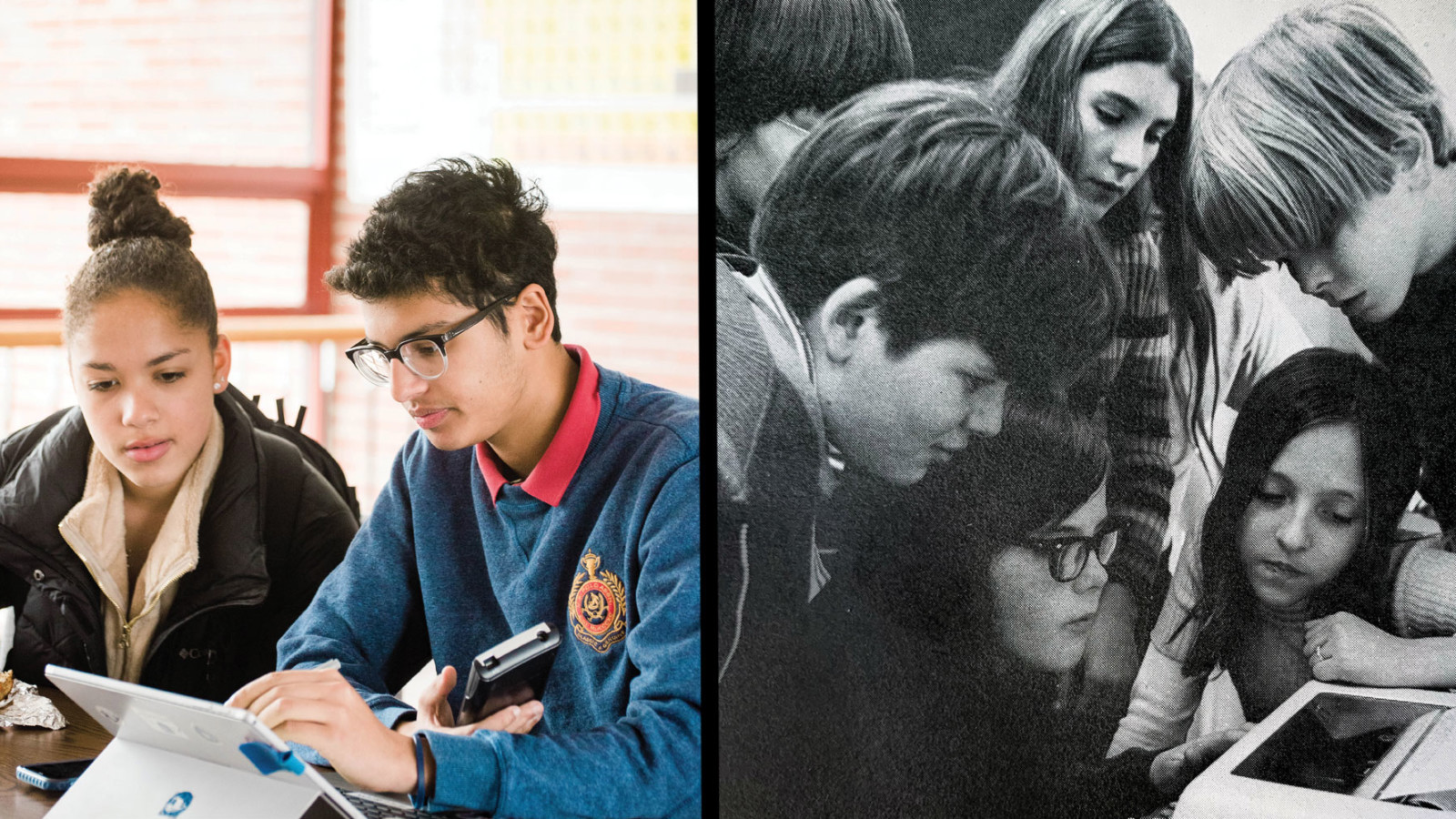Today’s technology program has come a long way from the school’s first “mechanized mind” in 1973.
How It Started
Williston anticipated the arrival of its first computer in 1973 like a young couple awaiting their first child. Room One on the second floor of the Schoolhouse was redecorated and given new carpet. Reference books were purchased. The Willistonian even carried an announcement: “Courses Begin in Anticipation of Computer,” proclaimed the February 7, 1973, front page. When the “mechanized mind” finally arrived—one of some 50,000 PDP-8 models made by the Maynard, Massachusetts-based Digital Equipment Corporation—it represented a notable upgrade from what students had been using previously: a single terminal wired to a computer at the University of Massachusetts. Here was a machine with 12K of memory (no chuckling, please), a DECtape drive and controller, two terminals, and a list price of $18,500 (cheap for a computer then, but the equivalent of $115,000 today). Interacting with the suitcase-size “minicomputer” required learning the BASIC programming language, and demanded that students “be thoroughly logical in thought processes and precise in syntax,” computer instructor John Cody noted in the 1973 Bulletin. Despite the steep learning curve, students wrote programs to play football, calculate a person’s proper ski length, and keep track of medical records. Middle School students reportedly programmed the machine to play craps—and won $500. “The pleasure and self-satisfaction of a student who makes up his own problem, and then solves it, is hard to measure,” Cody observed.
How It’s Going
Today, in 2021, every Williston student and teacher receives a Microsoft Surface Pro computer, loaded with a suite of software tools that allow them to seamlessly create, collaborate, and communicate, whether in the classroom, in the dormitories, or at home. Logical thought processes and precise syntax are still welcomed by these tablet-sized devices, but you can also use a stylus to sketch an idea right on the touch screen, record and share a video of a friend’s interpretive dance, or review your class assignments in a virtual notebook and get real-time feedback from your teacher. “It’s changed the way they learn,” observes Middle School Director Jen Fulcher in a recent video made to mark Williston’s selection as a Microsoft Showcase School. “It’s changed the way they get feedback, changed the way they can work together. You can type, you can draw, and the writing is real.” Student’s work is stored in the cloud, safe from hungry dogs and computer-frying spilled drinks. All of this, of course, allowed Williston to more easily adapt to the remote-learning requirements of the COVID-19 pandemic. Classes could continue virtually, with assignments shared and reviewed in real time, from wherever students were working—whether on the second floor of the Schoolhouse or halfway around the world.

